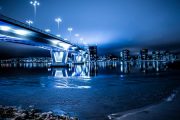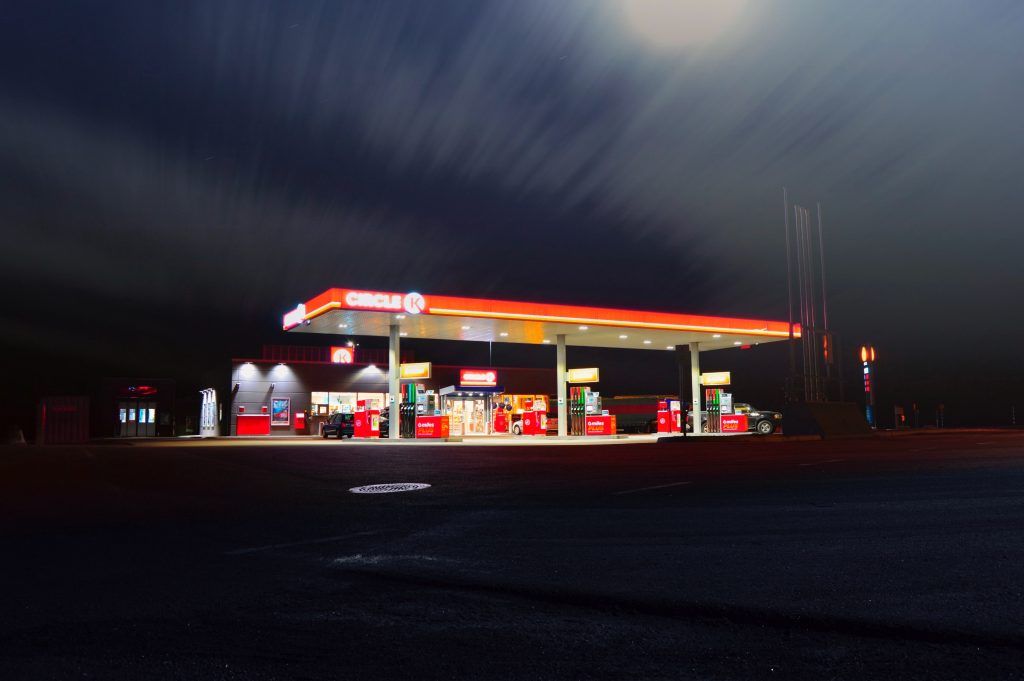Industrial Lighting Standards
1. Main range
The scope of factory lighting design includes indoor lighting, outdoor installation lighting, station and field lighting, underground lighting, road lighting, guard lighting, obstacle lighting, etc.
The most common is factory lighting.
(1) Characteristics of industrial plants
Industrial plants can be divided into single-storey industrial buildings and multi-storey industrial buildings according to their architectural structure.
Most of the workshops of multi-storey industrial buildings are found in light industry, electronics, instrumentation, communication, medicine and other industries. The floors of such workshops are generally not very high, and their lighting design is similar to that of common scientific research laboratory buildings, and most of them use fluorescent lighting solutions.
The production plants in the machining, metallurgy, textile and other industries are generally single-storey industrial buildings, and according to the needs of production, more multi-span single-storey industrial plants, that is, multi-span workshops arranged in parallel next to each other. The needs can be the same or different.
The width (span), length and height of the single-storey factory building are determined according to the needs of the process on the basis of meeting certain building modulus requirements.
The span of the workshop is generally 6 to 36m. The length of the workshop ranges from tens of meters to hundreds of meters. The height of the workshop is generally 5-6m low, and the height can reach 30-40m, or even higher.
The span and height of the workshop are the main factors considered in the lighting design of the workshop.
In addition, according to the needs of industrial production continuity and product transportation between sections, most industrial plants are equipped with cranes, whose lifting weights can be as light as 3 to 5t, and as large as several hundred tons (currently, the lifting capacity of a single crane in the machinery industry is up to 800t).
Therefore, factory lighting is usually realized by lights mounted on roof trusses.
(2) Classification of industrial plants
According to the characteristics of product production, industrial plants can be roughly divided into the following three types.
①General production workshop: workshops produced in normal environment.
②Explosion and fire hazard production workshops: workshops that normally produce or store explosive and fire hazards.
③ Production workshops in harsh environments: dusty, humid, high temperature or production workshops with steam, vibration, smoke, acid-base corrosive gases or substances, and radioactive substances.
According to the above classification, the factory lighting design should be strictly followed by different production conditions.
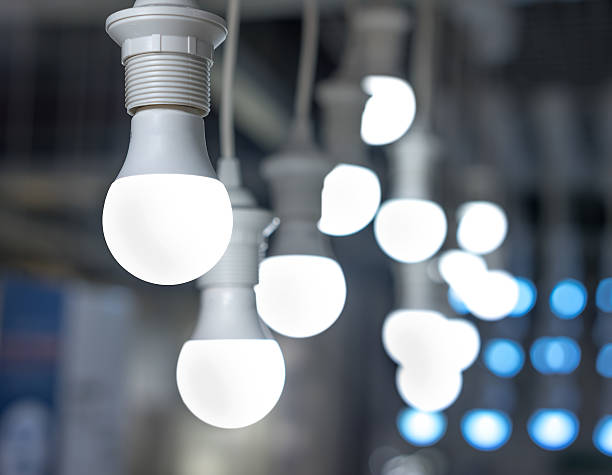
2. Main lighting method
2.1. Lighting method
Lighting methods can be divided into: general lighting, zoned general lighting, local lighting and mixed lighting. Its applicable principles shall comply with the following provisions:
(1) When it is not suitable to install local lighting or it is unreasonable to use mixed lighting, general lighting should be used.
(2) When a certain work area needs to be higher than the general lighting illumination, the general lighting of the partition can be used.
(3) For places with high illuminance requirements, low density of working positions, and unreasonable general lighting installed separately, mixed lighting should be used.
(4) Only local lighting should not be installed in a workplace.
2.2. Types of lighting
Lighting types can be divided into: normal lighting, emergency lighting, duty lighting, guard lighting and obstacle lighting. Among them, emergency lighting includes backup lighting, safety lighting and evacuation lighting, and its applicable principles should meet the following requirements:
(1) When the normal lighting is extinguished due to a fault, the lighting for equipment should be installed in places that need to ensure normal work or continued activities.
(2) When the normal lighting is extinguished due to a fault, safety lighting shall be installed in places where the safety of persons in danger needs to be ensured.
(3) When the normal lighting is extinguished due to a fault, evacuation lighting should be installed for the exits and passages that need to ensure the safe evacuation of personnel.
(4) On-duty lighting should use a part of normal lighting that can be independently controlled or a part or all of emergency lighting.
(5) Guard lighting should be installed within the guard range as needed.
(6) The installation of obstacle lighting shall strictly implement the relevant regulations of the aviation or transportation department in the region where it is located.
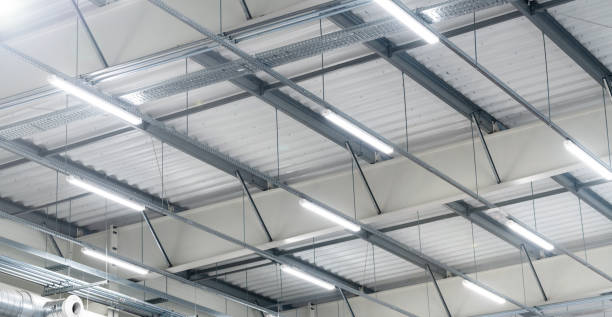
3. Main lighting fixtures
When selecting the type of lights and lanterns according to the environmental conditions, attention should be paid to the environmental temperature, humidity, vibration, contamination, dust, corrosion, explosion and fire hazard media.
The following three environmental conditions are used to select lights.
(1) Selection of lights for general industrial plants
① In normal environments (heating or non-heating places), open-type lights are generally used.
② For places with a large amount of dust, but no danger of explosion and fire, choose lights suitable for the amount of dust.
The amount of dust in a dusty environment is measured by the concentration in the air (mg/m3) or the amount of sedimentation [mg/(m2·d)].
For general dusty environments, dust-proof (IPSX grade) lights should be used.
For dusty environments or general dusty environments with conductive dust, dust-tight (IP6X grade) lights should be used.
For conductive fiber (such as carbon fiber) environments, IP65-rated lights should be used. For lights that often need to be washed with water, they should choose not less than IP65 lights.
A clean room is an area inside a factory that requires tightly controlled environmental conditions.
The main function of lighting is to make work activities clearly visible, resulting in safe, comfortable and efficient working conditions.
(2) Introduction
The lighting system must not interfere with the production process or affect the flow of clean air in the area.
The system must be easy to maintain.
Large-area clean rooms are mainly established in the fields of semiconductor industry, electronics industry, computer industry and aviation industry.
Biological clean rooms are also used in the pharmaceutical, food and beverage industries.
(3) Lighting scheme
Errors in a clean room can be very serious and therefore require higher lighting levels.
If there are no special requirements for the spectrum, neutral white light with high color rendering should be used.
The same requirements should be applied to local lighting, with better avoidance of glare.
The lighting system for a given dust level depends primarily on the air handling requirements.
The high color rendering properties of fluorescent lights are well suited for this application.
In the wide color temperature range of the light source, the desired color temperature can be easily selected.
Luminaires for demanding clean rooms: thin wire cables
Cleanrooms under stringent requirements must strictly control airflow in order to maintain the desired environment. Therefore any changes in airflow should be avoided.
Large areas of hidden lights or surface lighting should be avoided.
The luminaire must be as thin as possible, with a width smaller than the distance between the suspended ceiling brackets.
In this lighting, the Jurassic Teardrop light fixture series with polycarbonate diffuser screen is used.
A more direct and economical approach to clean room design is to choose Jurassic Simple 1*36W slatted luminaires with only thin wire cable racks.
Although standard fluorescent lights can be used as a source of glare, this can be controlled by adding reflectors inside the luminaire: ZLL.
All of the above can improve lighting efficiency by about 15%.
Luminaires for clean rooms with moderate dust levels: recessed luminaires
Recessed light fixtures can be used when a medium dust level (1000 or more) is required in the clean room.
Whether installing closed or open luminaires, it should be ensured that air passes through the filter and not through the luminaire.
It is also important to have a clean design in order to avoid getting in the way of the operating system.
Care should be taken to use the correct lights carefully to avoid glare and ensure good lighting.
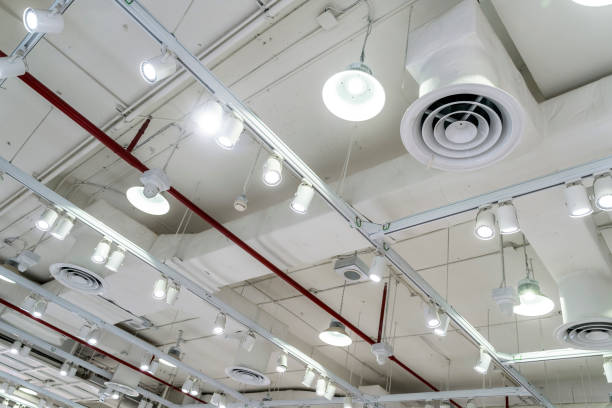
lights for factory lighting should be selected according to environmental conditions, work and production conditions, and due attention should be paid to aesthetic appearance, convenient installation and coordination with buildings, so as to be technically and economically reasonable!



